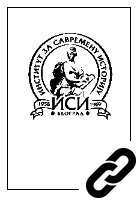2. Naučni članci
-

-
Royalist resistance movement in Yugoslavia during the Second World War
-
The Royalist resistance movement during the Second World War was represented by the Yugoslav Army in the Homeland (YAH), led by General Mihailović. It was an anti-Nazi military alliance based on patriotic sentiments created after the catastrophic defeat in the April 1941 war. What started as a small group of officers and soldiers of the former Yugoslav royalist army (a total of 26 men) who gathered on Ravna Gora on May 11, 1941, became a resistance movement that symbolized Serbian national ideology. History has remembered them as “Chetniks”. The appearance of Mihailović and his men met with enthusiasm in the “free world” as the first sign of resistance in occupied Yugoslavia. Praised and glorified at the beginning, they would be excluded from
the Allied Coalition and stigmatized as “traitors” at the end of the war. The interpretation of the history of the YAH has been the most controversial issue of post–war Yugoslav historiography. Despite incontrovertible evidence of the YAH being a resistance movement, official narratives considered it Axis collaborators., Published, Šifra projekta: 177016, Article is part of project Srpsko društvo u jugoslovenskoj državi u 20. veku: između demokratije i diktature (177016) that is financed by the Ministry of Education, Science and Technological
development of the Republic of Serbia.

